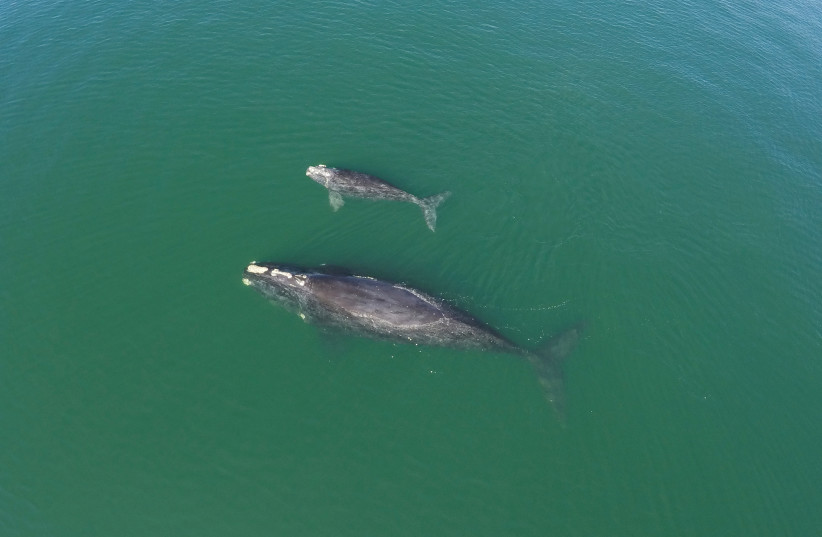An analysis of over 600 humpback whale vocalizations found that the Vema Seamount in the southeast Atlantic Ocean, which is located some 1,000 km. west of Cape Town, South Africa, show that it may be a feeding ground used by the whales during their migration southwards between September and November, a new study has found.
Seamounts are defined as isolated elevations in the open ocean with summits of over 1,000 meters above the sea floor. They that can provide important habitats for whales, dolphins and porpoises, as they are often points of high primary productivity surrounded by deep waters, providing potential food sources for predators, the study explained.
Published in the peer-reviewed online journal JASA Express Letters and conducted by researchers from the universities of Stellenbosch (South Africa) and Exeter (UK), the study focused on the Vema Seamount due to its proximity to a popular migration route used by humpback whales.
Humpback whales make two types of noises, categorized as "song" and "non-song." Previous studies showed that while migrating, they usually communicated using "song" calls. However, the sounds recorded at the Vema Seamount were nearly all non-song calls, indicating that the area was used for more than just a migration marker and may have served as a midway feeding ground.
The researchers divided the different calls into five types, four of which were already known to exist in humpback whales: Whups, grumbles, grumble-whups, tonals and impulsive sounds.

Whups are characterized as "brief harmonic upsweeps," meaning a singular call that rises and falls. According to the study, these are widely considered contact calls and could indicate interactions between whales in the area, such as between mothers and their calves.
Grumbles, as the name indicates, are elongated low-frequency pulses that overlap, meaning they do not include distinctive individual pulsed calls. Both whups and grumbles are also produced by whales who are foraging and are common to feeding grounds.
Grumble-whups are calls that begin with a grumble and culminate in a whup; tonals are sounds with narrow bandwidths; and impulsive sounds, which the study discovered for the first time being used by humpback whales, sound like a gunshot.
According to the study, whale populations are increasingly struggling to find food as natural resources shift and decline. The discovery that Vema and other seamounts serve as temporary feeding grounds and not just navigation markers could lead countries to save the whales by designating entire migration routes as preserved marine ecosystems, the study suggested.
